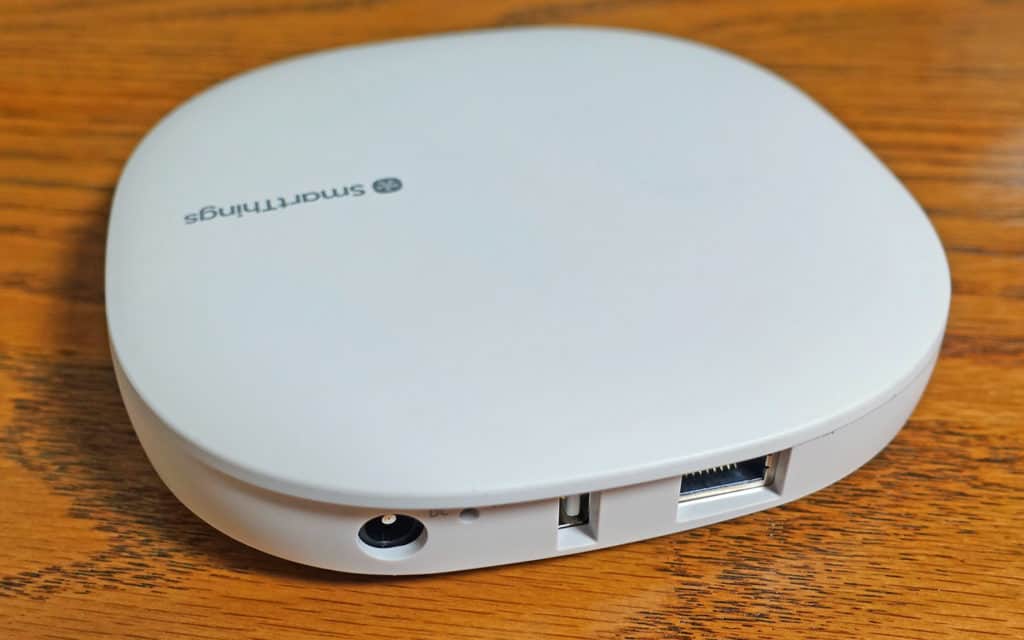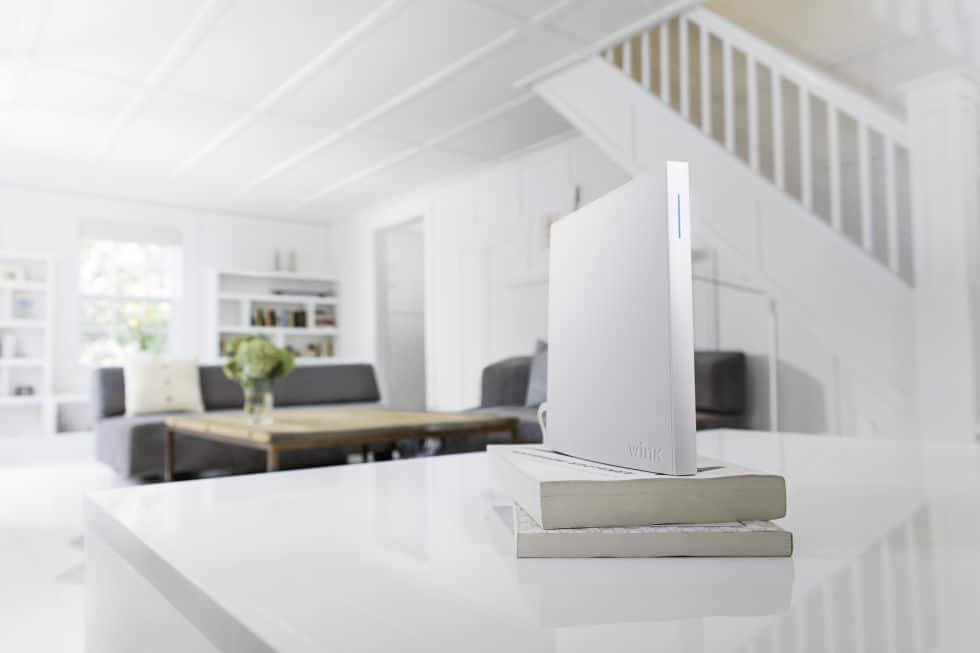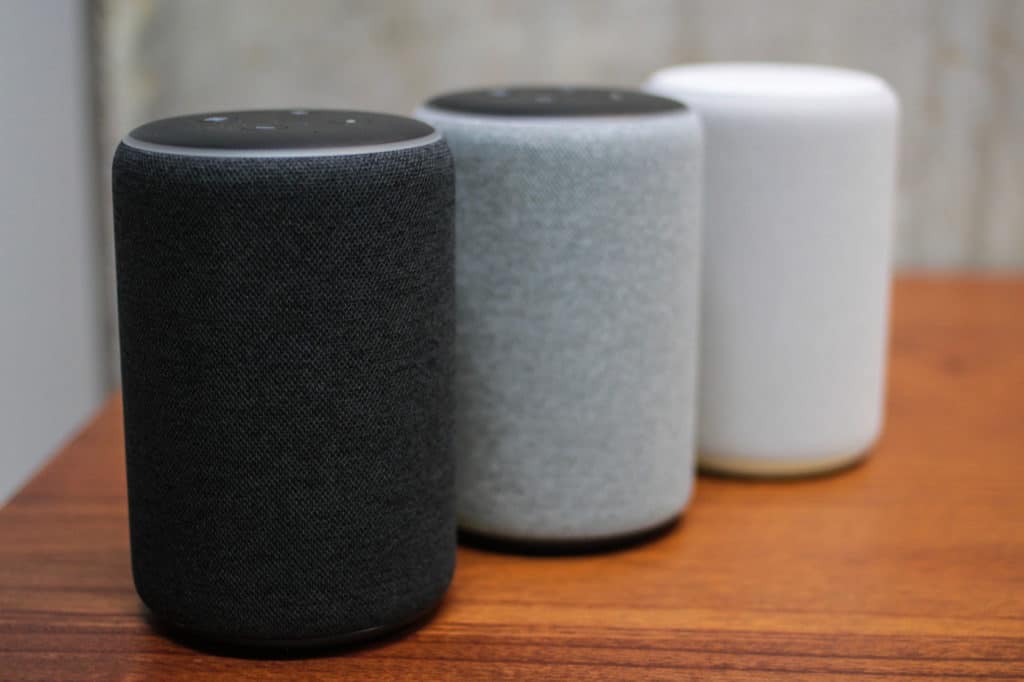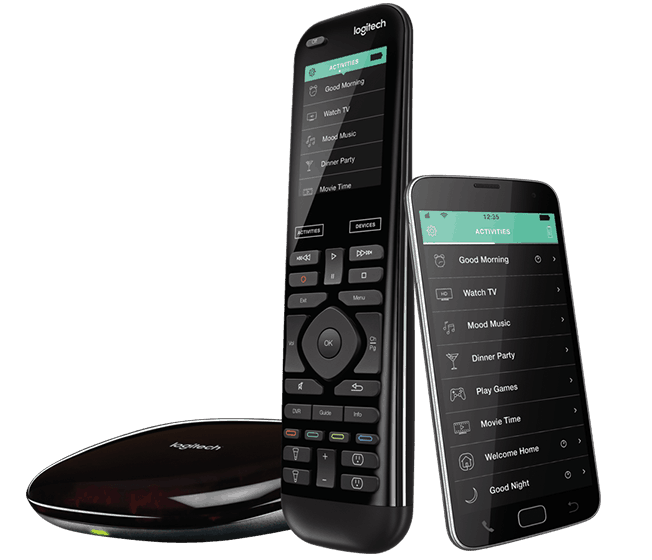Let me guess, It is either you’re thinking of getting the best smart home hub for your smart home, you’ve seen so many options (actually about 17 from top brands) and you don’t know which one to choose that will be the right fit for your Smart Home.
Or probably you just started hearing about Smart home hub from your friends, the internet or even a TV show and you don’t know what it is or if you even need to get one.
Well, a Smart home hub is a vital ingredient in your smart home if you’re going to enjoy ultimate convenience.
In this review, I’ll be explaining what a smart home hub really is and whether you need to get one. I’ll also be talking about the top 5 Best smart home hubs based on long hours of research and pointing out factors to consider when buying a smart home hub for yourself.
Reading this post will give you hands-on and quality knowledge about the best smart home hub so as to avoid making a costly mistake when getting one for yourself.
Here are the top 5 smart home hubs in 2022 at a glance:
| Samsung SmartThings V3 Hub | Wink Hub 2 | Echo plus (2nd generation) | Google Home Max | Logitech Harmony Elite | |
| Protocol: | Wi-Fi, Bluetooth, Zigbee, Z-Wave, IP |
Wi-Fi, Bluetooth, Zigbee, Z-Wave, Kidde, Lutron Clear Connect |
Wi-Fi, Bluetooth, Zigbee |
Wi-Fi, Bluetooth |
Wi-Fi, Bluetooth |
| Voice Control: | Amazon Alexa, Google Assistant |
Amazon Alexa, Google Assistant |
Amazon Alexa | Google Assistant | Amazon Alexa |
| Battery backup: | 10 hours | None | None | None | Rechargeable battery |
| Range: | 50 to 130 feet | 50 feet | 40 to 50 feet | 20 feet | 30 feet |
| App: | SmartThings App for iOS and Android | Wink App for iOS and Android | Alexa App for Fire OS, iOS and Android | Google Home App for iOS and Android | Harmony App for iOS and Android |
| Warranty: | 1- year warranty | 1- year warranty | 1-year warranty | 1-year warranty | 1-year warranty |
Let’s dive right into this best smart home hub review.
Top 5 Best Smart Home Hubs Review
1. Samsung SmartThings V3 Hub
The Samsung SmartThings is fairly easy to setup but not the easiest that there is. During the installation process, after plugging your SmartThings into your ethernet and power sources it tells you to wait for a maximum of 30 minutes for configuration to complete though it takes less than that most of the time. After then, it easily synchronising with other smart home devices.
SmartThings Hub is the most versatile home automation hub there is, as it is compatible with so many protocols: Wi-Fi, Bluetooth, Zigbee, Z-Wave and IP powered devices. This outstanding feature allows you to connect it with so many smart home devices.
The SmartThings Hub supports a vast spectrum of third-party products, including Philips Hue, LIFX, and Sylvania smart bulbs; GE, Leviton, and Lutron lighting controls; Ring video doorbells, Netgear Arlo home security cameras; Ecobee and Honeywell smart thermostats; Kwikset, Schlage, and Yale smart door locks; Bose smart speakers; and a host of other products in every smart home category you can think of.
SmartThings hub comes with five built-in routines and also allows you to create more routines for your devices. One of the built-in routines is the “Good Morning” routine that triggers the Day mode. Activating it raises the temperature and brightens up the lights.
As an added feature, it comes with 10 hours of backup battery power so even if the power goes out your house will never stop being smart. One of the setbacks though is it doesn’t have a voice assistant but it is compatible with Amazon Alexa or Google Assistant.
or Google Assistant.
2. Wink Hub 2
People who just started their smart home journey really love the Wink Hub 2 because it serves as a teaching companion. When you are setting it up, the App auto-discovers your other smart home devices and guides you through the setup process.
journey really love the Wink Hub 2 because it serves as a teaching companion. When you are setting it up, the App auto-discovers your other smart home devices and guides you through the setup process.
Wink Hub 2 is compatible with a whole lot of wireless devices including numerous Z-Wave and ZigBee products, Bluetooth LE gear, and the wireless protocols that Kidde smoke alarms and Lutron lighting and motorized window shade controls use. This hub is not compatible with Apple HomeKit.
Due to this compatibility feature a lot of smart cameras, smart doorbells, thermostats, smart lights and much more are compatible with the Hub. You’ll never run out of possibilities to make your home smarter.
Wink has an immediate benefit over SmartThings here: The Wink Hub 2 can be set up over 2.4- or 5GHz Wi-Fi (and thus placed anywhere) or through an ethernet cable, where the SmartThings hub must be tethered to your router via an ethernet cable.
3. Amazon Echo Plus (2nd Generation)
The Amazon Echo Plus (2nd gen.) doesn’t just serve as a smart speaker but also as a Smart Hub. It works with a technology called Alexa and this voice assistant can control a lot of smart home devices like your smart switches, smart locks, smart thermostats, and more devices from brands like Ecobee, Philips Hue, Wink, Nest and Honeywell.
Based on the recent integration of the Zigbee hub into the Echo plus you can just plug incompatible devices and you’ll be on your way. Zigbee enabled products to include Philips Hue lighting, Kwikset locks, ADT home security hubs amongst others.
The speaker itself comes with more than 50,000 voice apps called skills which are different voice commands you can give Alexa. For more info on Alexa, click here.
One of the selling points the Amazon Echo plus has is it’s design. The second generation is enveloped in fabric instead of a plastic exterior and is available in 3 colours: Charcoal, Heather Gray or Sandstone options.
4. Google Home Max

Just like the Amazon Alexa, you can use Google Assistant to control your smart home devices using your voice commands. You can control your smart lights, security devices, smart plugs, set routines, and so on using the Google Assistant.
It also does a good job of making your home a media centre if your house is already set up with Chromecast. It gives you the leverage to control what the TV or connected speakers are streaming.
Google Home Max has only Wi-Fi and Bluetooth compatibilities and is only able to connect with a limited number of smart home devices but with technologies like IFTTT a way can be found around it.
Google Assistant is able to recognize different voices and respond accordingly. For example, if you say ”Hey Google, let’s go to work”, Home checks the state of traffic on your commute routes, reads out your calendar, and adjust other smart devices based on your already set routines but if your wife or friend gives the same command, it responds to her accordingly checking her routes, calendar, etc.
The most outstanding feature the Google Home Max has is the unbeatable speaker. It was built for a deep, rich and big sound.
5. Logitech Harmony Elite
The entertainment features that the Logitech harmony Elite has makes it stand out in it’s own way. The Hub is compatible with a whopping 270,000 home entertainment and smart home devices, and I haven’t find any home entertainment device that the Hub didn’t support. It is also compatible with smartphones as well as Mac and PC computers.
The touchscreen remote allows you control everything because it has the app embeded in it. It is also easy to use because the buttons are motion activated.
Due to the wireless connection of the remote or smartphone to the Harmony Hub, you don’t need to point the remote at a device for it to work. The Harmony Hub communicates the instruction to the device accordingly.
The Hub can control up to eight remotes and you can setup 50 routines called “one-touch actions” that combine commands directed at multiple devices. For example, “Watch TV” is a standard one-touch action that turns on the receiver, the television, and sets the input to the cable box.
However, Logitech can only be used in smaller smart homes because it can only work with a maximum of 15 devices.
Factors to Consider When Getting The Best Smart Home Hub
Connectivity
Smart Home Hub connects to your internet either through a wireless connection or wired ethernet. Make sure you check the connection the Smart hub requires before acquiring it. If it’s an ethernet connection you need to be sure you have a free port on your wireless router for the cable.
Voice Assistant
Though the voice assistant make things convenient and controlling your home hands-free, it’s not really for everybody. If you can control your home through an app on your smartphone then you can get a normal Smart hub but if you have to use a voice assistant then you can go ahead and get one with a voice assistant or get a compatible smart speaker to augment your Smart Hub.
Protocol
Just as we’ve seen earlier in this post the different protocols that smart home devices use, you have to be sure the Smart Home Hub is compatible with all the smart devices you already have or you intend to get.
Looking at Samsung SmartThings V3 Hub and Wink Hub 2 (the 2 hubs with the strongest recommendations) for instance. As it as to do with lighting, if you have a house full of LIFX bulbs, you’ll want to use SmartThings, because Wink doesn’t support them. If you have more of Lutron instead, Wink is your best bet. Philips Hue is supported by both hubs.
Range
Some Smart home hubs have longer ranges than others so you’ll need to plan where you’ll keep your Smart Hub to avoid interference and steady functioning with all your smart home devices.
IFTTT
IFTTT (IF This Then That) is a free web service that allows you to set up chains of activities or trigger actions called “applets”. If your smart hub has IFTTT you can set up routines that trigger single or multiple devices to perform an action based on another trigger.
Smartphone App
Smart hubs have their own mobile app. It is with the mobile app that you can connect to a lot of smart home devices, create IFTTT routines, set up schedules and check up on other devices.
The App sends you notification when unexpected emergencies occur like excessive smoke from a part of the house. You have to ensure that the app is compatible with the kind of smartphone you’re using.
Battery
Smart home hubs work with electrical power so they’ll need to be constantly connected to work. Because Smart hubs work with security and safety devices like smart lock and motion sensors they often carry a battery backup so the device continues working in case of power outage.
Look for Cheaper Deals
Smart hubs are rapidly increasing in popularity and because of that they are constantly going on sales. During days like Prime Day and Black Friday
and Black Friday , Amazon puts discounts on Echo plus and its other hubs.
, Amazon puts discounts on Echo plus and its other hubs.
I also recommend purchasing your Smart Home Hub online as you’ll be able to bundle with other deals or smart home devices at a cheaper rate.
Must You Get a Smart Home Hub?
It actually depends on the kind of smart home you intend to have. If you plan on having a lot of smart home devices then the answer is Yes though some people feel they can get away with it because some home automation products individually pair with selected devices.
Just imagine this…
Your coffee maker is normally plugged into your smart plug in the kitchen and now that you’ll soon be having the morning sip you turn it on using your smartphone. Next, you enter other app and turn on your bathroom lights then you navigate to another to adjust the thermostat to a comfortable level and you keep on opening different apps and making alterations to match your taste in your house. I can imagine how tiring this will be when continually done. The truth is you are actually acting as the Smart Home Hub.
To avoid experiencing this kind of scenario that limits your ability to set up routines, it’s a very good idea to invest in getting a Smart home hub especially when you have a lot of smart home devices currently or if you intend getting a lot in the nearest future. (People that want to make their home a Smart Paradise).
a lot in the nearest future. (People that want to make their home a Smart Paradise).
But on the flip side, if you just intend having just one or two smart home devices then you shouldn’t bother getting a Smart home Hub as I don’t think it will be a wise and economical decision. Devices like the Philips smart lights come with their own Philips Hue hub so they don’t need any help to control the lights in different parts of the house.
Nest smart home systems like thermostat, smoke detector, doorbell and so on have a similar technology in that they are also designed to speak to themselves so you may not need a Smart Hub for them.
What Are The Common Smart Home Protocol Types?
One of the factors you have to consider in getting a Smart Home Hub is that it has to be able to interact with all the smart home devices you currently have or you intend to have in the future. It is important to note that since smart home devices are made from different companies they have different languages called “protocols” which they respond with.
The most popular protocols include Wi-Fi, Bluetooth, Zigbee and Z-Wave.
Let’s look at them briefly…
Wi-Fi: This is a high bandwidth network mainly used for internet and media streaming but it can also be used for smart home communication. It actually consumes a lot of battery power so you have to ensure your Wi-Fi device is plugged into an electrical outlet.
Bluetooth: It is a more flexible protocol than Wi-Fi especially in the type of commands you can send and receive though its bandwidth isn’t as high as that of Wi-Fi. It can also be used to form mesh networks which enable devices to send and receive commands to extend range of the network.
Zigbee and Z-Wave: They are very little power consumers that use mesh networks to extend the range of smart home network. They can actually be limited in the amount of commands they can send out so they are best suited for appliances like smart light bulbs and motion sensors.
Frequently Asked Questions
What is a Smart Home Hub?
Simply put, a Smart Home Hub is a device that connects every smart home device in your home and unifies them to perform several commands at the same time automatically.
What can a Smart Home Hub do for you?
Smart home hubs connect to your home internet and set up all your smart devices on the cloud. This is actually one of its wonderful features because it helps devices like your smart lights and smart locks, that normally are not able to connect to the internet themselves because of the bluetooth protocol they use, connect directly to the Smart Home hub.
The Hub controls all your devices remotely using either a compatible voice assistant or its app on your smartphone. You can set up a daily schedule and routines with your Smart home hub. It gives you the leverage to create commands that make you have the total feeling of a smart home.
For example you can grant someone that comes to your house at a specific time daily to walk your dog without giving the person access to your full house. You also receive notifications on your smartphone when motion is detected around your gates or front door even in your absence.
Conclusion
This Best Smart Home Hub review has looked at the top 5 Best smart home hubs that you can use in transforming your smart home but as we also saw there are factors to consider before getting yourself one so you don’t get to regret later.
Now it’s over to you, I’ll like to know if you’ve decided to get yourself the Best Smart home hub and if Yes which of the Smart home hub will you get. Please drop a comment in the box below and I’ll sure keep in touch… Cheers




